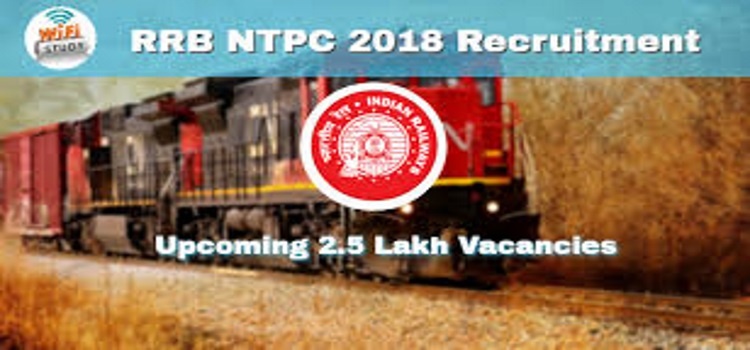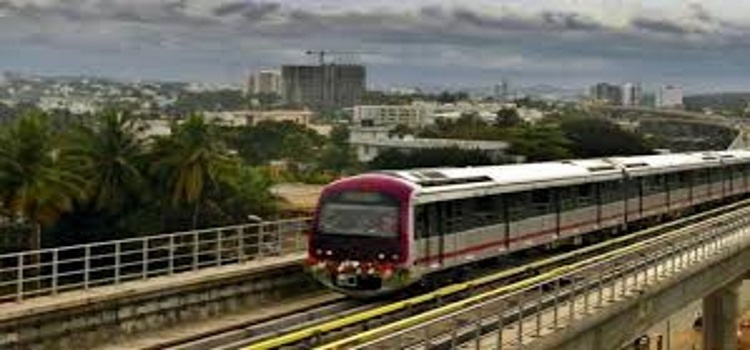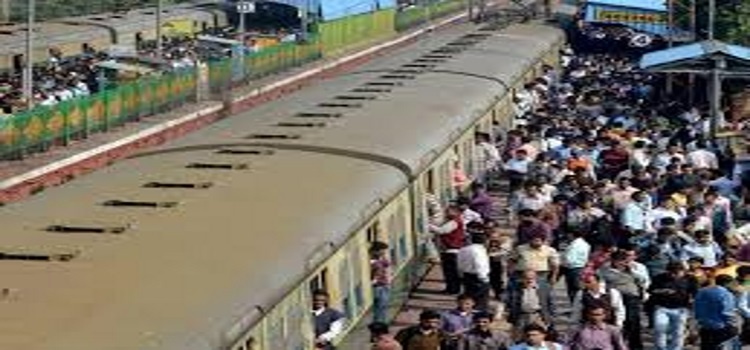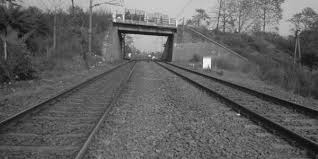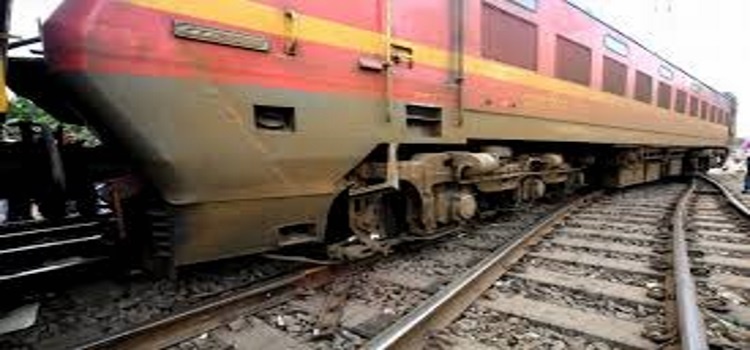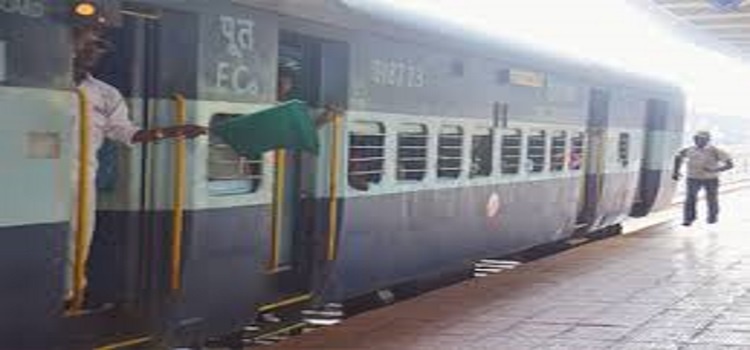
The railways ministry plans to soon seek cabinet clearance to ease norms for private investment in the railway station redevelopment programme.
Indian Railways has identified 600 stations for redevelopment and the ministry is of the view that the existing public private participation (PPP) norms for the station redevelopment programme are stringent, officials said.
The private sector has been wary of potential return on investment in such projects, they said. Under the programme, the contractor who wins would be given railway station and adjacent land owned by the railways on a lease of 45 years for development.
The contractor would be able to monetise the land through commercial exploitation, by building malls, hotels and complexes, for instance, on the land available.
In lieu, the contractor would have to modernise the existing station and provide all modern, airport-like facilities at platforms and peripheral railway area. The national transporter proposes to tell the cabinet that the concession period of 45 years is not
lucrative enough to attract private investors.
“For 2-3 stations we have tried to bid, there have been single bids. The one bid scenario is not preferable but not too many investors have been willing to come forward on existing terms,” said a senior ministry official, who did not wish to be identified. The rail ministry received comments as part of an inter-ministerial consultation process. It also plans to allow the concessionaire to sublease land.
The railways ministry wants that Indian Railways Station Development Corporation (IRSDC), a state-run unit of the railways, should be implementing agency for all redevelopment projects and be allowed to raise funds from domestic and international markets, whereas the ministry could provide initial funding for kickstarting the project.
Out of the 600 stations identified, Indian Railways is redeveloping around 100 stations on its own under the engineering, procurement and construction or EPC mode, and by involving other public sector units such as the National Building Construction Corporation. The remaining would be redeveloped through PPP.
New Delhi Railway Station is on a fast track to get an artsy revamp, has got colourful walls and street art as part it’s ongoing makeover. The days to come will see upgraded waiting rooms, toilets, and other facilities, too.
A peculiar whiff of mere mortals mixed with haphazardly-dumped garbage reaches one’s nostrils from meters away. Soon the chase by men dressed in brick-red shirts (coolies) — to help one carry the luggage — begins and then comes the entry of the New Delhi Railway Station. The childhood memories of the several vacations spent travelling in trains come back rushing, and are suddenly interrupted by an announcement of a delay in the arrival of a train bound for one of the eastern states.
No matter how you arrive — in a cab, auto or your private vehicle of transport — any experience at the station is bound to stay with you for a long time. That’s because of two things — first, the excitement that a train journey creates, and second, the usually dirty… er, filthy environs of the station. Watch out, stomping off mindlessly in any direction can dangerously lead you to a spot that’s brazenly used as a public urinal.
But this will no longer hold true once the detailed upgrade plan of the Indian Railways comes through. Expected to finish by this June-end, it will have loads of changes, from colourful walls to revamped toilets, to marvel at this station opened in 1926. “A lot of work has begun already. I have been working here since the last seven years, and it feels great to see the new display screens, more cleaning staff and other aesthetic developments now,” says Pankaj Tuli, assistant catering manager of a food stall at platform one near the Paharganj Gate.
Some passengers awaiting their train at this platform admire a leopard image created on one of the staircases. “Sher bahut achcha banaya hai (The leopard artwork is very well made),” excitedly says a coolie, Roop Singh. He has been working at the station for 15 years now, and feels happy to see that the station’s upkeep is improving. “Sab kuch badal gaya hai itne saalon mein. Pehle yahan itna ganda rehta tha. Ab safai karne wale bad gaye hain. Achcha lagta hai jab log aasani se aa jaa pate hain (everything has changed in all these years. Earlier it used to be too dirty here. Now the number of cleaners has increased. It feels good when passengers are able to commute easily).”
Nitesh Kumar, a bookseller at platform seven, who doubles up as an information provider for the many passengers, says, “Some people get themselves clicked in front of the peacock that’s painted on this staircase. And then, come asking since when has this been here.” He adds, “Do hazaar se zyada log puchne aate hain ek din mein. Kabhi gaadi ke bare mein, kabhi platform number, aur kabhi aise hi time pas karne. Par jab iss mor ke baare mein puchte hain to main kehta hun ‘Ek number platform par sher bhi hai’ (Some two thousand odd people come asking me about everything from the next train to the platform number on which their train will come. Some even come just like that to chit-chat. But, when a passenger asks me about this peacock painted on the staircase then I ask them to check out the leopard painted on the staircase at platform one). Then, they go to check out the artwork on staircase of platform one and come back to share their excitement with me. It makes me feel happy. But I would have felt proud had they not been dirtying the station. People don’t throw garbage in their homes, then why do they litter here?”
The question echoes in the premises of the station, and even outside. Rajesh Kumar, a PCO booth in-charge near the Ajmeri Gate entry — where the station façade radiates with a fresh coat of red and white paint — voices his concern against people’s careless attitude: “Why is it always the responsibility of the government to maintain cleanliness? And, even if it is, then the railway authorities are responsible within its premises. The minute you cross the boundary of the station, you witness so much muck that you feel repulsive. Isn’t it also the responsibility of public, in general, to keep public places clean?”
Though there are boards warning people to not sit/wait at the bridge that connects the two ends of the railway station — Paharganj and Ajmeri Gate — yet many flout the rule, and aren’t challaned. At least not in front of us! Nevertheless, the journey of those working, and making a living at this junction continues. And remains alive the hope that their place of work will look artsy and aesthetical in the months to come.
Railways turns to DDA to get Anand Vihar, Bijwasan stations up sans glitches – Moves a Cabinet Note proposing DDA transfer its land back on a freehold.
The Indian Railways has moved a Cabinet note proposing that the Delhi Development Authority (DDA) transfer its land back on a freehold basis so that it can redevelop the Anand Vihar and Bijwasan stations without any glitches, a senior official said today. A freehold estate in land (as opposed to a leasehold) is where the owner of the land has no time limit to his period of ownership. Lease lengths vary and most common are 45 and 99 years. “It has been proposed that DDA or other union territory shall transfer any central government land to the Railways on a freehold basis, with a minimum conversion charge as payment. The Railways will be free to use the land for both commercial and residential purposes. This will be provided without any change in land use patterns,” the official said, adding that this would help quicken the process of development.
The Indian Railway Station Redevelopment Corporation Managing Director and CEO S K Lohia confirmed the development and said currently land is given on lease to Indian Railways and thus it cannot be monetised. “So, the change from leasehold to freehold was imperative for station redevelopment.” Not only this, the railways in its note has also proposed to provide incentives to states which relax their construction norms for its ambitious Rs 1-lakh crore station redevelopment project, a senior official said. The proposal, sent to the Cabinet earlier this week, also suggested an increase in the lease period from the present 45 years to 99 years for such projects to facilitate private players and encourage them to invest in the schemes.
“The states which give Railways extra FSI (Floor Space Index) would be given incentives in the form of sanctioning of additional projects in these states, shares in revenues or shares in any other income accrued out of such policy,” the official said.
To minimise problems with land acquisition, the Indian Railways also suggested that transfer of land to the sector be on a freehold basis. The national transporter will also no longer seek the approval of local bodies for building purposes but merely take their consent, as is prescribed in Clause 1 1 of the Railway Act.
The ministry has also proposed an increase in the lease period from 45 years to not more than 99 years for station redevelopment projects to ensure the maximum commercial utilisation, he said. The redevelopment of 600 Indian Railways stations was mentioned by Finance Minister Arun Jaitley in his Budget speech. In the first phase, the Indian Railway Station Development Corporation (IRSDC), which is the implementing agency, has already earmarked 90 such stations.
The redevelopment project is estimated to cost over Rs 1 lakh crore for 600 stations. The ministry has said that these changes proposed by them will ensure that additional revenues are generated from the projects and that the cost can be met from the revenues generated from the commercial development of extra Indian Railways land.
Secunderabad Railway Station undergoing transformation – Ceilings of the station are being applied with new kind of paintings to give a cooling effect to passengers
The ever busy Secunderabad Railway Station is in the midst of a gradual transformation in every aspect starting from hygiene on the premises to improvement in passenger amenities.
Despite plans to redevelop the station shelved by the Railways, consistent efforts to improve cleanliness, passenger amenities and appearance seems to be yielding positive results.
A lot of emphasis has been laid on improving aesthetics at the station. Tastefully done Cheriyal scroll paintings have rolled out on the walls of platform no.1 and platform no.10 welcome passengers. Already the new paintings and cosmetic changes of general waiting halls meant for passengers have changed the look and ambience of the station.
Ceilings of the station are being applied with new kind of paintings to give a cooling effect for passengers. The platform floors too are set to undergo a thorough revamp that will give a fresh and new feel of the entire facility.
According to Secunderabad Divisional Manager, Amit Varadan, various departments concerned with SCR division were making efforts to maintain high standards when it comes to Secunderabad station.
“Be it infrastructure or basic amenities, the station is going for a facelift to provide a satisfactory experience to passengers,” he said.
With the station getting congested day by day, fourth Foot over Bridge (FoB) would be constructed this year. To help senior citizens and differently abled persons, two new lifts were commissioned on platform no.1 and no.10 in the station, the top official pointed out.
For the first time in the station, six water vending machines have been commissioned and two more are in the pipeline. With this, passengers will be able to buy water from 300 ml to 5 litres with every 300 ml of water costing Rs 1 and Rs 20 for a bottle of 5 litres.
Non-conventional methods to save energy
The South Central Railways (SCR) is also promoting non-conventional renewable energy by adopting solar power technologies at the railway station.
Apart from installing LED lighting in the entire station, now, the railway authorities have increased the usage of solar power to 36 per cent, which eventually will lead to a savings of Rs 66 lakh in power bills every year.
DA Subramanyam, Additional DRM (Infrastructure), said food counters of IRCTC were given a major facelift and station was provided with a base kitchen to provide food to major trains and superfast expresses such as Rajdhani, Duronto, Telangana Express and others.
To make the station disabled-friendly, SCR authorities are also planning to introduce battery-operated cars in the station which would be helpful for senior citizens and differently abled.
Meanwhile, works on solid waste management plant which will manage waste and generate power in the Secunderabad station are going on at a brisk pace and this new facility is likely to be available this year itself.
The project being taken up under Corporate Social Responsibility, the contract has been awarded for Rs.1.5 crore and will be operated for five years. The plant would have a capacity of 10 tonnes of waste.
Coming soon
• Secunderabad Railway Station has been commissioned with two new lifts
• A new FoB will be constructed and will be the fourth one
• Six water vending machines have been commissioned, two more in pipeline
• SCR plans to introduce battery operated cars in station
• Solid waste management plants will be available this year
Number says
• The station has a passenger footfall of over 1.5 lakh every day
• It is servicing over 200 trains including express trains and passengers apart from MMTS
• There are 10 platforms in the station with three foot over bridges
• It became first railway station to bag the ‘Green Railway Station’ tag
Varkala, Kanyakumari railway stations to get facelift
Railways will upgrade Varkala and Kanyakumari railway stations . Both the stations have been re-categorized as ‘non-suburban group 4’ stations. Earlier, Varkala and Kanyakumari stations were under the categories of B and A class stations respectively, based on annual passenger earnings.
The new categorization is based on the earnings, passenger footfall and strategic importance, with a view to improve passenger services and amenities at stations in a more effective and focused manner.
Earlier, the stations were categorised into 7, namely A-1, A, B, C, D, E and F. Now, the stations are divided into 3 groups, non-suburban (NS), suburban (S) and halt (H), with further division in grades.
The NSG 4 category comprise of stations with annual passenger earnings between Rs 10 to 20 crore and passenger movement of 20 lakh to 50 lakh. The passenger earnings for 2016-17 at Varkala railway station is Rs 9,81,91,005 and passenger movement is 37,76,071, while Kanyakumari station received Rs 18,37,80,622 as passenger earnings and 6,95,368 was the passengers movement reported from the station.
The new categorization of the stations, follows the directive from railway ministry, in which general managers were given the authority to categorize a station as NSG-4 category, if it is a place of tourist importance or is an important junction station.
The Thiruvananthapuram Central railway station (A1 Class) has been included in the NSG 2 category with annual passenger earning of Rs 1,84,48,16,371 and number of passengers at 1,43,63,426.
According to a railway official, the revised categories will benefit in the development of the small stations with good passenger movement. “The stations under Thiruvananthapuram division are categorised under NSG and HG classification. The stations categorized based on tourism destination, will be upgraded with additional passenger amenities. We have been informed that the re-categorization of stations will improve the amenities in the railway stations. But, a direction in this regard is awaited from railways,” said the official.
Irrespective of categories, railways have decided to provide foot-over-bridge, high-level platform and trolley path in all stations. And based on the categories, waiting halls, platform shelters, escalators, digital charts display, illumination and train and coach indication board will be provided to lower category stations.
Under the new system stations are categorized as Kollam Junction (NSG 3), Nagercoil Junction (NSG 3), Kochuveli (NSG 3), Neyyatinkara (NSG 5), Balaramapuram (NSG 6), Kazhakkoottam (NSG 5), Nemom (NSG 6), Parassala (NSG 5) and Pettah (NSG 6).
Habibganj, Gandhinagar Will Soon Be World-Class With Airport-Like Experience
After introducing Tejas Express that offers aircraft-like features, Indian Railwaysis set to open to passengers the revamped Habibganj and Gandhinagar railway stations that will be the first two “world-class”, “airport-like” railway stations in India! Indian Railways, the lifeline of the country, is often criticised for complex and time-taking projects. But in this case, IRSDC (Indian Railway Stations Development Corporation) is putting in all efforts to complete the station development projects in Madhya Pradesh’s Habibganj and Gujarat’s Gandhinagar by January 2019. IRSDC, a JV between IRCON (a government of India undertaking) and RLDA a statutory authority under the Ministry of Railways, is responsible for these big projects that aim at revamping railway stations into world-class transit hubs. In an interaction, IRSDC MD and CEO SK Lohia, has said that while Habibganj railway station redevelopment work will be complete by December 31, 2018, Gandhinagar station revamp will be done by January 9, 2019. According to Lohia, the idea behind station redevelopment projects is to get passengers to enjoy a good comfortable ambience at the concourse.
The entire responsibility of maintenance and revenue generation of these stations lies with IRSDC. “We have to make sure that these railway stations are revenue surplus and to the extent that this revenue can be used to invest back in the maintenance and development of the station,” Lohia told Financial Express Online. Elaborating on the same, Lohia said, “Even as we redevelop the station, our maintenance cost has gone down. Once the station is fully ready it will go up and we expect it to be in the range of Rs 4-5 crore for Habibganj. The estimated revenue is anywhere between Rs 6.5 to 7 crore per annum. We plan to increase this to more than Rs 10 crore per annum.”
Habibganj railway station will become the first in the country to be redeveloped under the PPP (Public-Private Partnership) model. An agreement for the same has been signed between IRSDC and the Bansal Group. The entire Habibganj Station redevelopment project is likely to be a Rs 450 crore project, of which Rs 100 crore would be spent on station redevelopment and Rs 350 crore on commercial development.
The Habibganj railway station will offer “airport-like” end-to-end comfort to passengers. “There will be additional waiting benches, clean toilets, retail areas and we are exploring other ideas such as video-game zones, virtual museums etc,” Lohia said. The Habibganj railway station will be a “green building” with LED lighting and waste water will be treated for reuse. There will also be bike-sharing terminals and in th future if electric mobility vehicles usage picks up, then charging stations for them, Lohia added. The new-look Habibganj railway station will boast of a glass dome-like structure and have facilities such as food plazas and cafeterias and a plush waiting lounge. The plan is to ultimately develop it into a multi-modal transport hub with connectivity to the city metro. Railway Minister Piyush Goyal recently reviewed the progress of the Habibganj project.
Gandhinagar Capital railway station redevelopment project is a unique one. It’s foundation stone was laid in January 2017 and as stated above, the work on the ambitious project will be complete in record two years time. According to Lohia, 42% of the civil work has been done. “By January 2019, the entire project will be complete, because the Vibrant Gujarat Summit has to be held. Work in going on 24*7 to meet the deadlines and I am confident we will be able to deliver,” Lohia said. The Rs 250 crore redevelopment project is a SPV between IRSDC and the Gujarat state government. The revamped station will be unique from a design perspective as it will have a 5-star hotel with 300-rooms on top of it! The hotel will also be ready by January 2019, and will be a convenient option for Vibrant Gujarat guests and eventually tourists. The ground floor of the hotel will be 22 metres above the ground! The hotel will have three buildings, combined to give the shape of petals. The Gandhinagar Capital railway station will have a dedicated transit hall and over 600 seats for passenger convenience. The transit area will have shops, kiosks, book stalls, food stalls and modular clean toilets.
In total Indian Railways has identified as many as 794 railway stations for redevelopment and revamp and plans are in works to finalise tenders for some of them. Even as Habibganj and Gandhinagar stations redevelopment progresses, the designs for stations like Surat, Gwalior to name a few are ready.
Bhubaneswar railway station set for smart overhaul
The Bhubaneswar railway station is all set to get a complete makeover with the East Coast Railway (ECoR) planning another platform, two more new tracks and Bhubaneswar Development Authority (BDA) developing a multi-modal hub. The existing station has six platforms and eight lines. The new platform and lines will be constructed preceding platform No. 1 for which Rs 70 crore has been sanctioned in the Railway Budget this year. While Rs13 crore has been sanctioned for the new large platform, `57 crore has been granted for two lines.
Apart from the project, a connecting line between Bhubaneswar New railway station at Patia and Mancheswar has also been sanctioned. “The existing platform No. 1 and the station building will be demolished to construct the two new lines and the large platform. The work will start soon after the design and estimate is finalised,” said a senior railway official.
The BDA has also finalised design and modalities for construction of the iconic state-ofthe- art multi-modal hub, which will be integrated with the railway station. As part of the hub, a beautifully designed four-storey building will be built at a cost of around `55 crore. It will have the railway station at the ground floor and theatre plaza, malls, nature plaza, food courts and experience plaza on three other floors.
The proposed building with centralised air-conditioning system will also have a basement parking facility for four-wheelers and two-wheelers besides separate waiting rooms for both men and women passengers of second class and upper-class. “While the Railways will construct the platform and lines, the BDA will look after the building part. Even as both the projects worth around `125 crore will start simultaneously, the hub building will be built in consultation with the Railway authorities,” added the official. Meanwhile, process has been initiated for signing an MoU between the State Government and ECoR for implementation of Railway Station Multi-modal Hub project.
The event initially planned in January was deferred as Khurda Road divisional railway manager Brij Mohan Agarwal fell ill. The Principal Chief Engineer of ECoR has written to the Executive Director (Station Development) of Railway Board in this connection.
The letter has briefed the Railway Board on the draft MoU regarding development of railway station and the changed scenario after inclusion of works to the tune of `70 crore besides the new connectivity with Mancheswar and the railway station. General Manager, ECoR, Umesh Sigh said the MoU is expected any time next month. “We are expecting the reply from the Railway Board soon. Once we get it, the process will start for signing of the agreement,” he said and clarified that no work has been hampered due to delay in signing of MoU.

